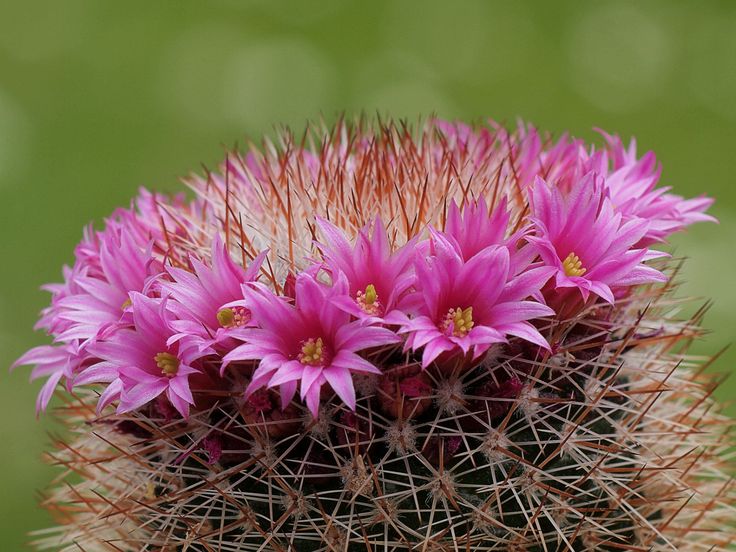
Exploring the Fascinating World of Mammillaria Cacti
Cacti are renowned for their unique and diverse characteristics, making them some of the most beloved plants in the world of gardening. Among the vast cactus family, one genus stands out for its charm and popularity among collectors and enthusiasts: Mammillaria. In this article, we’ll dive into the captivating world of Mammillaria cacti, exploring their characteristics, care requirements, and why they deserve a place in your succulent collection.
What is Mammillaria?
Mammillaria is a genus of cacti that belongs to the family Cactaceae. This genus is vast and diverse, comprising over 200 recognized species, each with its distinct features and unique appeal. Mammillaria cacti are known for their small, spherical to cylindrical shapes, covered in clusters of tiny tubercles (bumps) from which their spines emerge. These cacti are native to the Americas, with a significant presence in Mexico, where they thrive in various desert and arid regions.
Characteristics of Mammillaria Cacti
Mammillaria cacti are beloved by succulent enthusiasts for several reasons:
- Small Size: Most Mammillaria species are relatively small, making them perfect for indoor or compact gardens. Their diminutive size allows you to cultivate a diverse collection even in limited spaces.
- Gorgeous Flowers: While Mammillaria cacti are known for their charming appearances, they are equally celebrated for their stunning flowers. These flowers can range from white and pink to bright red or yellow, often appearing in a ring around the top of the cactus. Flowering typically occurs in late spring to early summer, creating a spectacular show.
- Unique Spines: Mammillaria cacti have a wide range of spine types, from hair-like to stiff and needle-like. These spines not only serve as a defense mechanism but also contribute to the cactus’s aesthetic appeal.
- Cultural Significance: Some Mammillaria species have cultural significance among indigenous people in their native habitats. For example, Mammillaria species have been used in traditional medicine and rituals by various Native American tribes.
- Adaptability: These cacti are hardy and adaptable, capable of thriving in a variety of conditions. They are well-suited for xeriscaping and can tolerate neglect, making them an excellent choice for novice gardeners.
Caring for Mammillaria Cacti
Caring for Mammillaria cacti is relatively straightforward, making them an ideal choice for both beginners and experienced succulent enthusiasts. Here are some essential care tips:
- Sunlight: Provide your Mammillaria with plenty of sunlight. They thrive in bright, indirect light and can tolerate some direct sunlight, but be cautious of scorching in intense heat.
- Well-Draining Soil: Plant your Mammillaria in a well-draining cactus or succulent potting mix. You can also add perlite or sand to improve drainage.
- Watering: Water sparingly. Allow the soil to dry out completely between waterings. Overwatering can lead to root rot, which is a common issue with cacti.
- Temperature: Mammillaria cacti prefer temperatures between 70-100°F (21-38°C) during the growing season and cooler temperatures (around 50-60°F or 10-15°C) in the winter.
- Pot Size: Choose pots that are slightly larger than the cactus itself. A snug fit encourages healthy growth and prevents overwatering.
- Fertilizing: Feed your Mammillaria with a balanced, diluted cactus fertilizer during the growing season (spring and summer).
- Pruning: Prune or remove any dead or damaged parts of the cactus as needed.
Conclusion
Mammillaria cacti are a delightful addition to any succulent collection or garden. Their charming appearance, ease of care, and fascinating diversity make them a favorite among plant enthusiasts. Whether you’re new to the world of cacti or a seasoned collector, Mammillaria cacti offer endless opportunities for exploration and appreciation in the captivating realm of succulents. Consider adding one (or several) to your collection and let these charming cacti thrive in your care.



